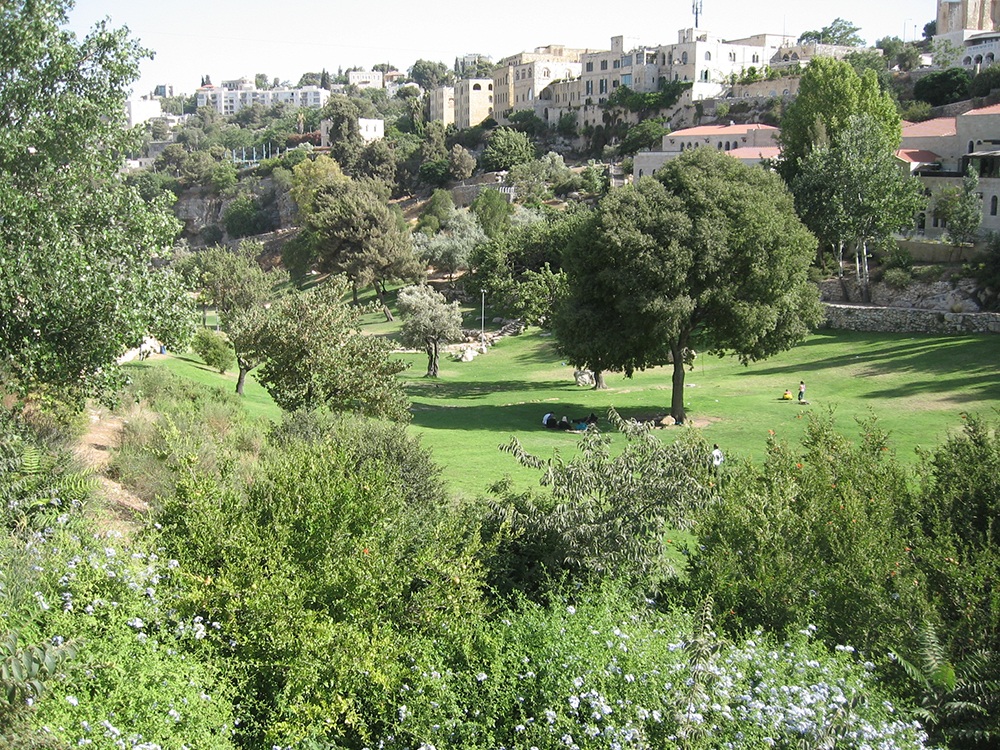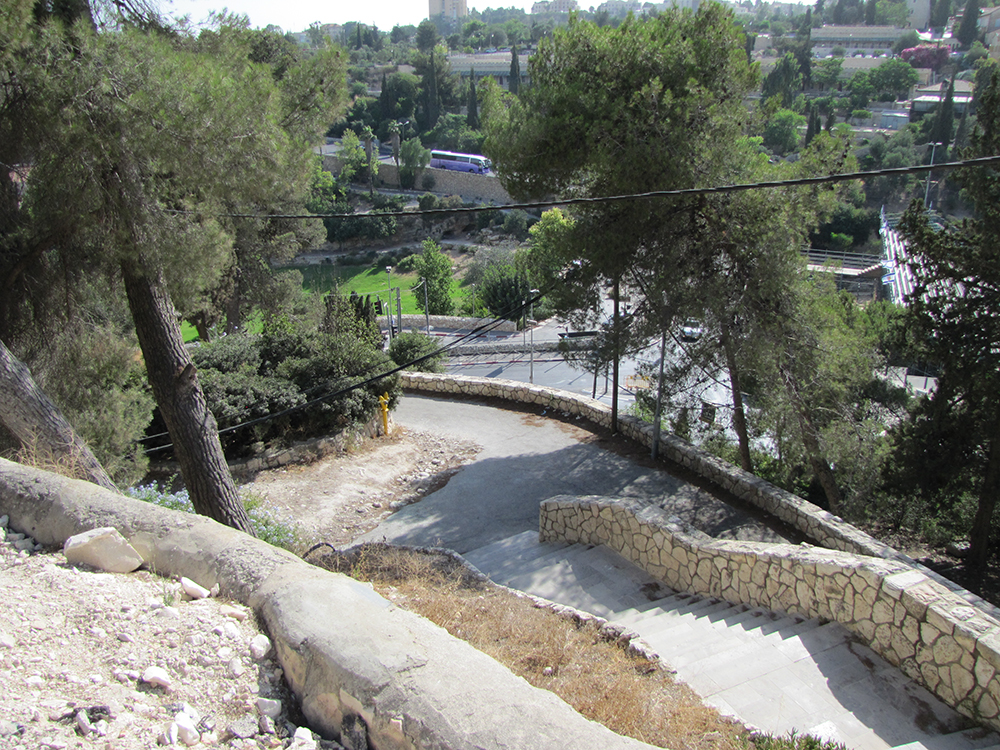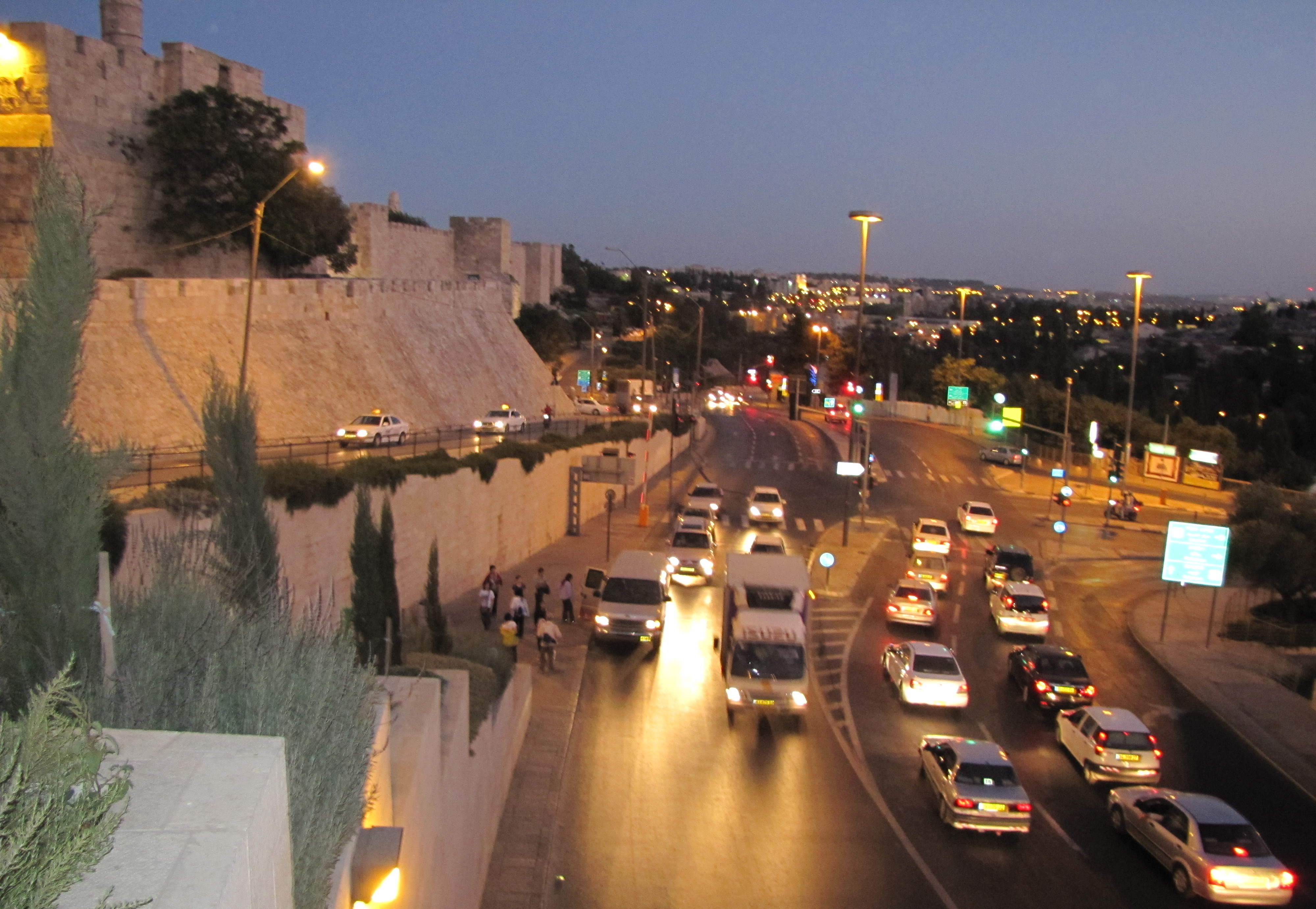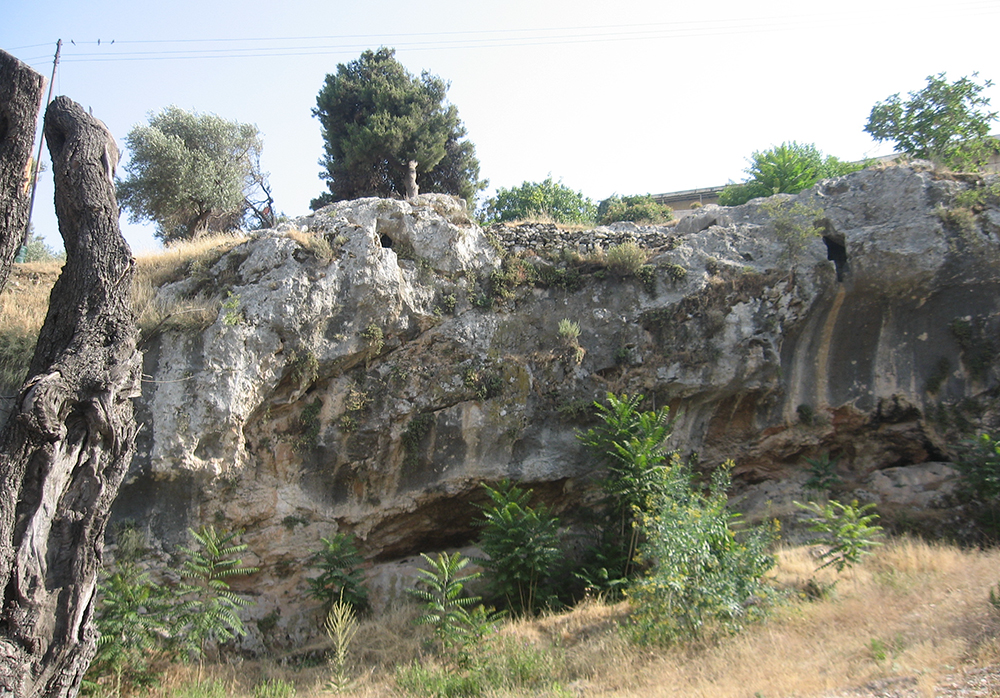
Section B Topography
Chapter 11 - Hinnom Valley
The Hinnom Valley is also called “the valley of the son of Hinnom” or “Valley of Benhinnom.” This was shortened to “Valley Hinnom” which in Hebrew is pronounced, “Ge Hinnom” and transliterated into Greek as “Gehenna.” Thus, the Hinnom Valley is the Gehenna of the New Testament, which is associated with fire, judgment, the Lake of Fire, eternal fire and Hell.
The border for the land allotted to the tribe of Judah is partially identified with this valley by Joshua in 1400 BC:
Then it ran up the Valley of Ben Hinnom along the southern slope of the Jebusite city (that is, Jerusalem). From there it climbed to the top of the hill west of the Hinnom Valley at the northern end of the Valley of Rephaim. - Joshua 15:8
At its lowest point, the Hinnom Valley is also the lowest point in the city of Jerusalem. If the Temple Mount on Mount Moriah is the highest point in the city and represents the presence of the Lord, then the lowest point of the city would also have illustrative value. This can be seen by comparing Amos and Isaiah’s use of topographical typology:
Come, let us go up to the mountain of the Lord, to the house of the God of Jacob. - Isaiah 2:3
Though they dig down to the depths of Sheol, from there my hand will take them. - Amos 9:2

Today the Hinnom Valley is covered with green grass. This photo was taken on the west side of the Mount of Olives near the southwest corner of the Old City walls. An Arab family is resting in the shade of a tree while their children play in the Hinnom Valley.
Add to this the geographical fact that the wilderness began where the Hinnom Valley ended, and we have a perfect illustration of the realm of demons (Leviticus 16:10) and the chaos that was conquered (Genesis 1:2, 3).
When the people of Judah began to worship demons and offer their children in the fire, they did it in the Hinnom Valley. When Josiah became king, he went down into the Hinnom Valley where children had been sacrificed to demons, and he desecrated the altar/image (or, “the burner” called “Topheth”) that the wicked people used to burn their children as an offering to the god Molech:
He (Josiah) desecrated Topheth (“the burner”), which was in the Valley of Ben Hinnom, so no one could use it to sacrifice his son or daughter in the fire to Molech. - 2 Kings 23:10
When God spoke through Isaiah of the coming judgment he also spoke of “the burner”:
Topheth has long been prepared; it has been made ready for the king. Its fire pit has been made deep and wide, with an abundance of fire and wood; the breath of the Lord, like a stream of burning sulfur, sets it ablaze. - Isaiah 30:33
The people of Judah have done evil in my eyes, declares the Lord. They have set up their detestable idols in the house that bears my Name and have defiled it (Solomon’s Temple). They have built the high places of Topheth (“the burner”) in the Valley of Ben Hinnom to burn their sons and daughters in the fire – something I did not command, nor did it enter my mind. So beware, the days are coming, declares the Lord, when people will no longer call it Topheth or the Valley of Ben Hinnom, but the Valley of Slaughter, for they will bury the dead in Topheth until there is no more room. - Jeremiah 7:31-33

Looking down into the Hinnom Valley from Jerusalem.
The Hinnom Valley had become a place associated not only with the lowest point and the path to the wilderness of demonic chaos, but also as a place of hideous demon worship that demanded the burning of living children. The prophets Isaiah and Jeremiah had condemned this valley as surely as King Josiah had shut it down. It became a rejected part of the city that was converted to a burning pit to dump the city’s garbage. In 27 AD Jesus made reference to this location calling it by the Greek name Gehenna when he said:
Anyone who says, “You fool!” will be in danger of the fire of hell (or, in the Greek, “Gehenna”). - Matthew 5:22
Likewise, James, Jesus’ brother, writing from Jerusalem around 48 AD says of the tongue:
It corrupts the whole person, sets the whole course of his life on fire, and is itself set on fire by hell (or, in the Greek, “Gehenna”). - James 3:6

Looking south down the Hinnom Valley in the evening outside the Joppa Gate and the west wall of the city. The Citadel can be seen in the top left corner of this photo.
The slopes of the Hinnom Valley were used for tombs by the wealthiest Jewish families in the first century. Josephus says the tomb of Annas the high priest is located in this area and such a monument has been identified. There are more than 30 tombs cut and excavated in the lower southern side of the Hinnom Valley by a monastery dedicated to Saint Onuphrius.

Tombs from the time of the New Testament in the southern end of the Hinnom Valley. Herod’s family tomb is located in this area, although Herod’s tomb was uncovered at the Herodium in April of 2007.